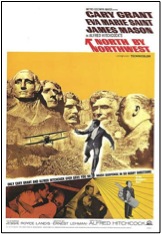Today’s post comes from Jim Holland. Jim’s passion is enabling product marketing teams. With a lifetime of experience, he has a fresh and unique perspective in guiding and managing product teams and has a knack for sensing markets, synthesizing ideas and turning them into reality. Enjoy the post and don’t hesitate to tweet your comments to Jim directly.
 Recently while traveling to a new fishing spot, I had an experience that could only be replicated in Alfred Hitchcock’s thriller “North by Northwest.” While driving along a rural highway, a crop dusting plane dropped in from nowhere, passed over the car and onto a field dusting everything in sight. If you’ve ever seen an actual field being dusted, it’s an amazing feat. Imagine flying a single engine plane at extremely low altitudes, maneuvering into position, as you dive over treetops, houses and power lines dropping a fine mist about 30 feet from the ground at precisely the right time and then, throttling yourself to safety avoiding the same obstacles and more. Can you image the rush? What type of training and preparation does it take?
Recently while traveling to a new fishing spot, I had an experience that could only be replicated in Alfred Hitchcock’s thriller “North by Northwest.” While driving along a rural highway, a crop dusting plane dropped in from nowhere, passed over the car and onto a field dusting everything in sight. If you’ve ever seen an actual field being dusted, it’s an amazing feat. Imagine flying a single engine plane at extremely low altitudes, maneuvering into position, as you dive over treetops, houses and power lines dropping a fine mist about 30 feet from the ground at precisely the right time and then, throttling yourself to safety avoiding the same obstacles and more. Can you image the rush? What type of training and preparation does it take?
If you compare the skill and precision of crop dusting to market sensing techniques, shouldn’t product management employ similar planning, preparation, techniques and proper ground support before taking off?
Think about it. When product management and its leadership jump into the cockpit of market research to better sense markets, is there a flight plan that will result in delivering useful information? What market problems are you discovering or need to understand? What artifacts and information currently exist? You can’t overlook the treetops, roof line and the power lines in order to dust the fields. Market sensing plans and preparation are only complete once you’ve had a safe landing with your research and credibility intact.
While planning and preparation are basics for any product management activity, do you find yourself missing the target and spraying the wrong field due to incomplete techniques or lack of ground support? If so, are you setting realistic personal and team goals that include measurable milestones? Make your goals achievable and prioritize what’s most important. For example, if you lack real information on why sales haven’t materialized, try conducting win/loss analysis. For some insights on win/loss see the Strategic Product Manager and On Product Management. If you aren’t connecting with economic buyers, are you sure who they are? David Meerman Scott wrote; “Basing your work on buyer personas prevents you from sitting on your butt in your comfortable office just making stuff up.” In both of these examples, discussing the right approach is what’s important.
Finally, ground support (a.k.a. internal resources) is key to supporting your efforts before and after market sensing. Do you regularly connect with sales engineers, customer support, client relations, development and others to include all aspects of those who interact with your customers, prospects and market? Do you ask for their input in reviewing your plans? As time and resources are always a factor, product management should be creative in finding ways for team members to share the experience.
As product management and its leadership adopt precision in market sensing, they will build internal and external credibility and provide a softer landing when credible market information is used to make product decisions.
If you like the post, please comment. If you’d like to connect with Jim, he may be reached on Twitter at jim_holland or drop him an email at jbhprivate[at]gmail[dot]com.
August 17, 2009 at 10:28 pm
Hi Jim,
Your story about crop dusting reminded me about the way Sam Walton used to conduct research for a new Wal-Mart when he was first expanding his business. He would get into a small plane and fly around until he saw a lot of cars in one spot. That was all the market sensing he needed to do. While that method worked for him, I don’t think it would work for most us.
Thanks for the reminder that product marketing can’t be done without help. It’s vital that the people on the ground – sales, customer support, development, etc. – have some influence in how a product is ultimately developed. Not only do you get a product that the customer wants to buy, you also get staff that are enthusiastic about supporting it.
Great post.
Pingback: 2011 – The Year of Product Management « Where the Product Management Tribe Gathers
December 16, 2012 at 7:40 pm
Porno des vielles sex 3d